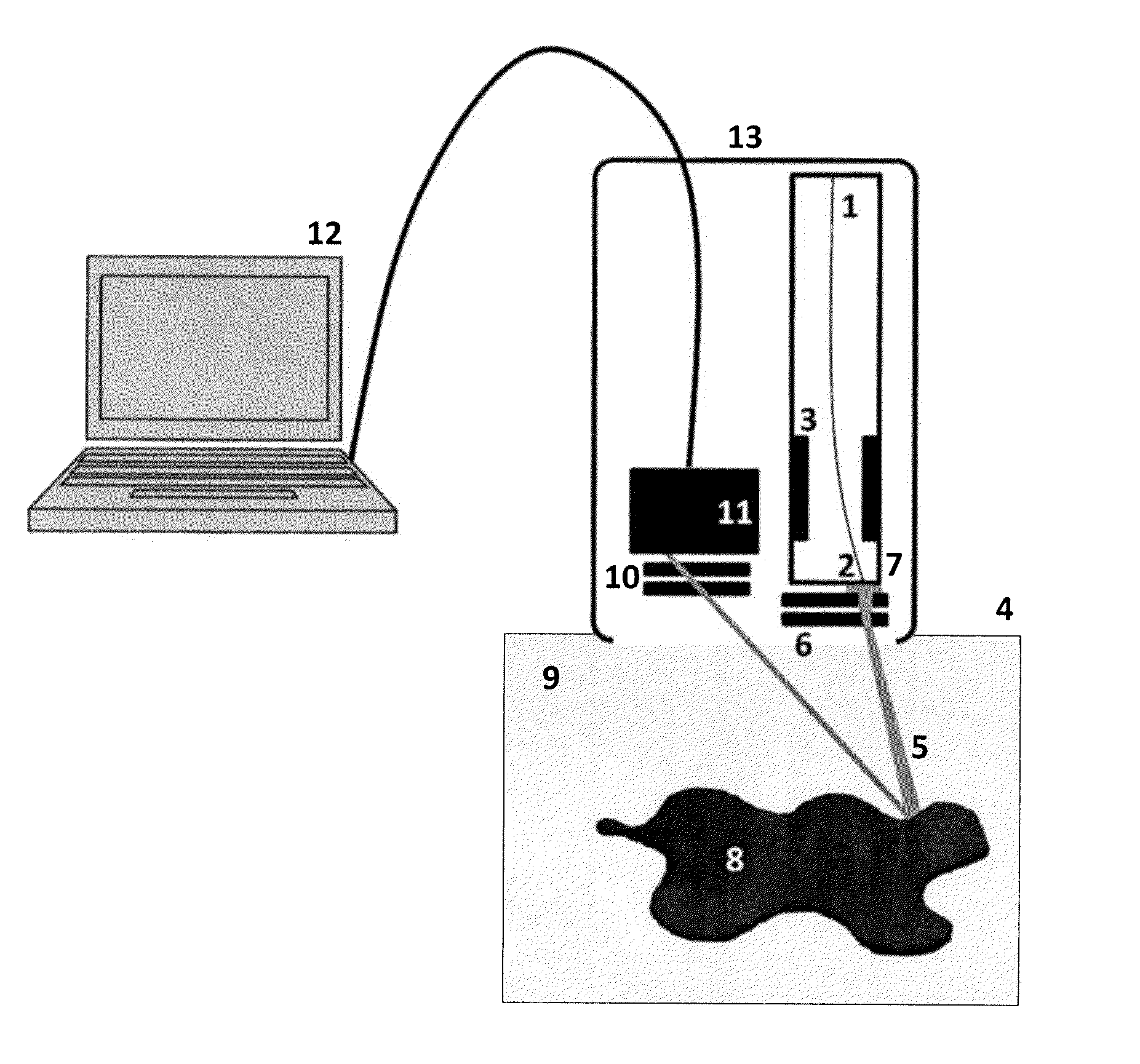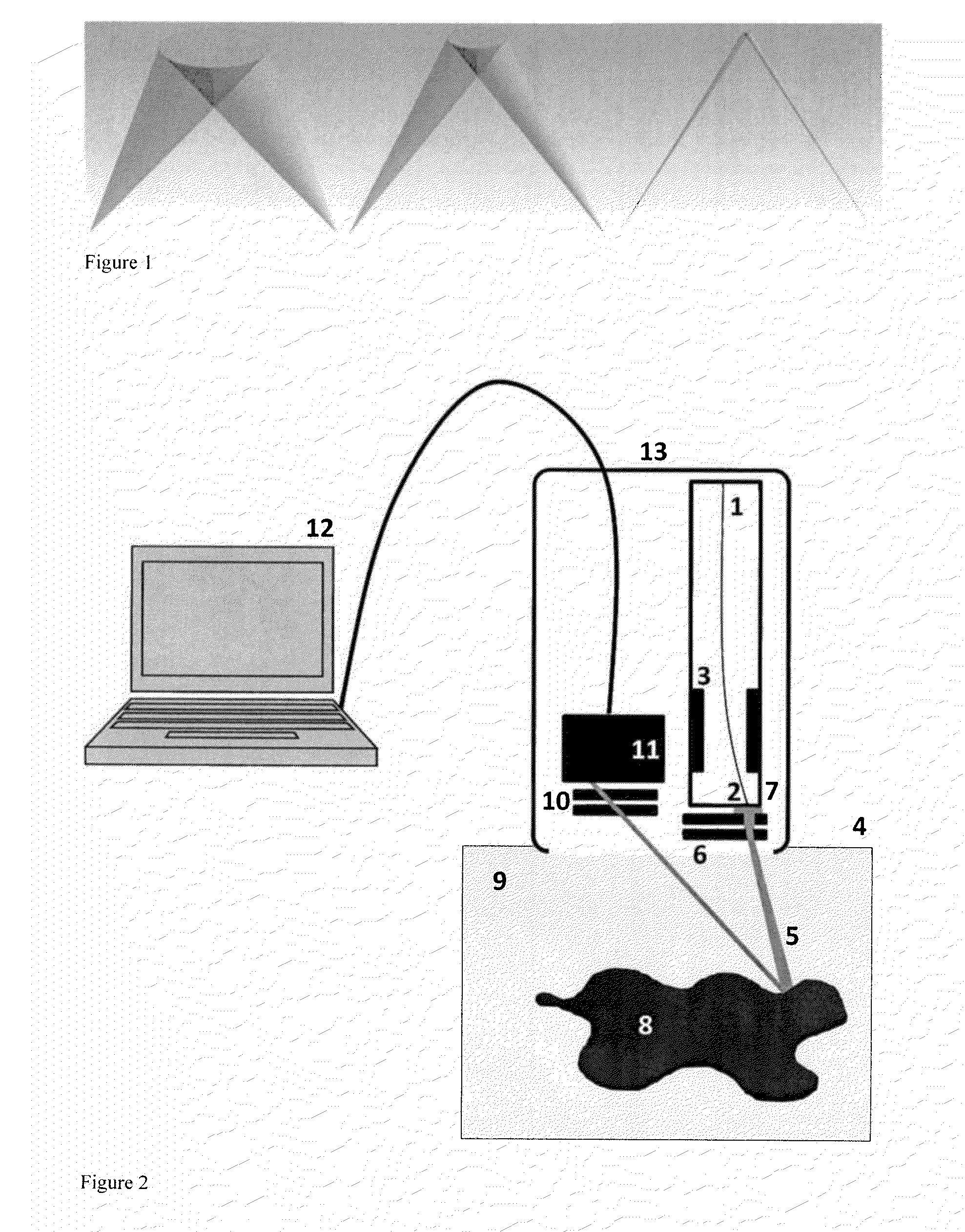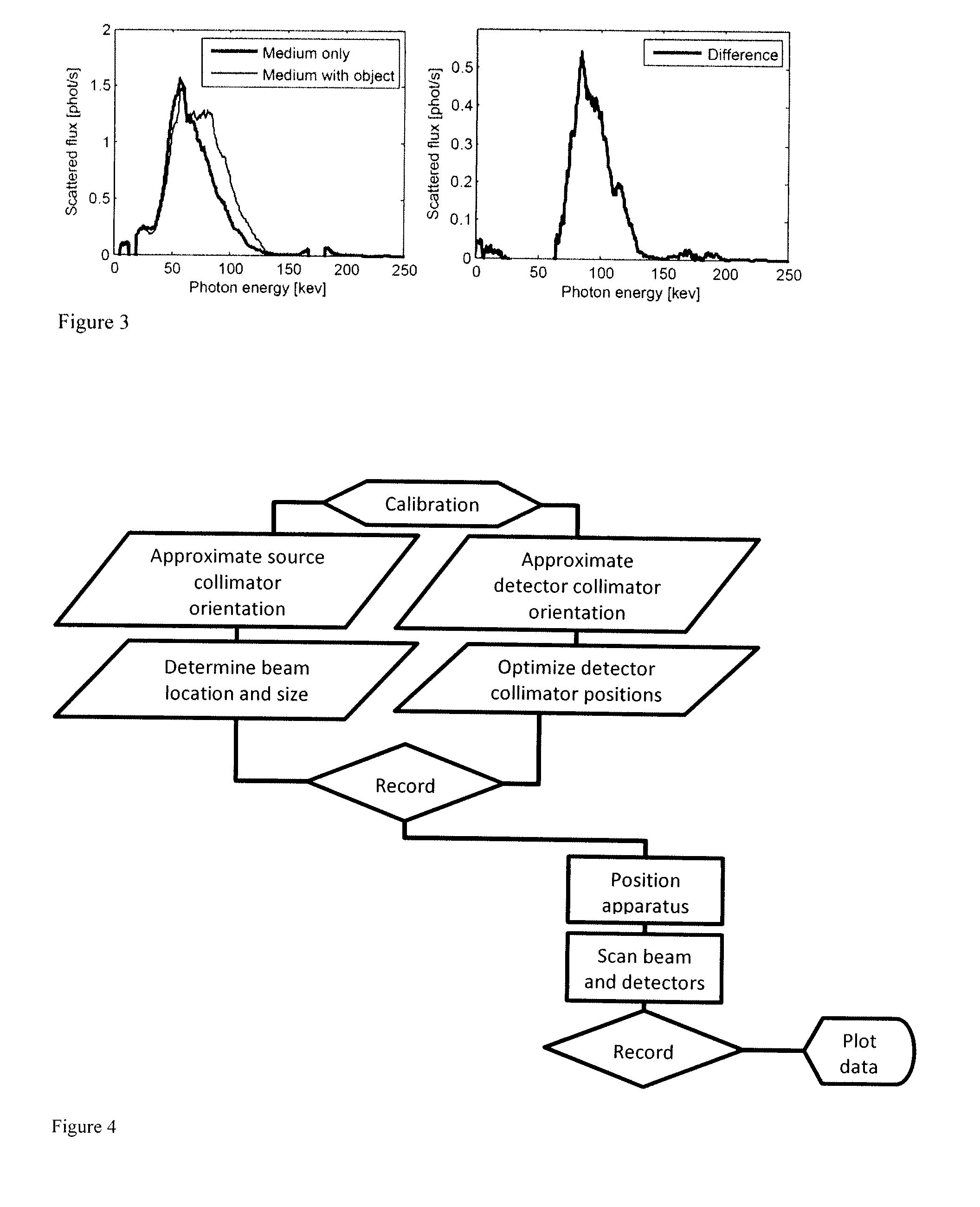X-Ray Backscatter Imaging of an Object Embedded in a Highly Scattering Medium
a highly scattering medium and backscatter imaging technology, applied in the field of backscatter imaging techniques, can solve the problems of not easily admitting repeatable investigations, providing no information about the composition of objects, and high cost of instances, and achieves the effect of high energy and sufficient strength
- Summary
- Abstract
- Description
- Claims
- Application Information
AI Technical Summary
Benefits of technology
Problems solved by technology
Method used
Image
Examples
Embodiment Construction
[0019]The invention described here comprises an apparatus and method for obtaining a three-dimensional representation of a target object within a fluid-carrying conduit, such as a hydrocarbon exploration or production well, using high energy photons. The representation is essentially a three-dimensional image that achieves visualization of the shape of the target object despite the intervening opaque fluids located between the imaging tool and the object.
[0020]According to one example embodiment, a narrow, pencil-shaped beam of radiation is scanned in coordination with a similarly narrow detector field-of-view in order to sample the radiation scattering properties of only a small volume of material at any given time. The result is a clearer visualization with a greater viewing depth.
[0021]In order to create the clear visualization required, the scattering from the fluid that reaches the detectors must be minimized. This is achieved by forming the source radiation into a narrow beam,...
PUM
| Property | Measurement | Unit |
|---|---|---|
| thick | aaaaa | aaaaa |
| distance | aaaaa | aaaaa |
| distance | aaaaa | aaaaa |
Abstract
Description
Claims
Application Information
 Login to View More
Login to View More - R&D
- Intellectual Property
- Life Sciences
- Materials
- Tech Scout
- Unparalleled Data Quality
- Higher Quality Content
- 60% Fewer Hallucinations
Browse by: Latest US Patents, China's latest patents, Technical Efficacy Thesaurus, Application Domain, Technology Topic, Popular Technical Reports.
© 2025 PatSnap. All rights reserved.Legal|Privacy policy|Modern Slavery Act Transparency Statement|Sitemap|About US| Contact US: help@patsnap.com



